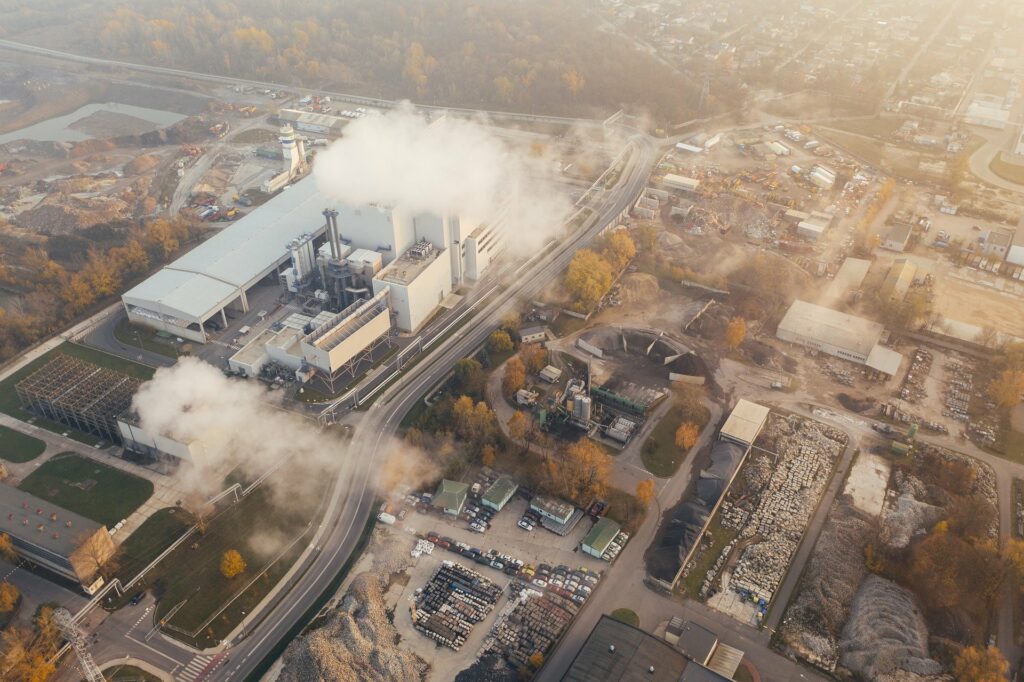Lockdowns imposed against the spread of the coronavirus fostered a noticeable decline in humanity’s greenhouse gas (GHG) emissions while they were in effect. Despite this, GHG levels in the atmosphere hit “record highs” in 2019 and continued to increase all throughout 2020, according to the World Meteorological Organization (WMO).

The results show that we’re still well on our way towards a much hotter climate in the future. Although the economic slowdown caused by the pandemic has helped in this regard, it wasn’t able to bring atmospheric GHG levels down. Furthermore, this illustrates why stabilizing the climate requires a focus on long-term, sustained reductions of such gas in order to be successful.
Less, but not little
“The lockdown-related fall in emissions is just a tiny blip on the long-term graph,” WMO chief Petteri Taalas said in a statement. “We need a sustained flattening of the curve.”
GHGs prevent heat from the surface of the Earth from radiating back out into space. In effect, this makes them act as a blanket that’s warming up the planet. This process is actually pretty beneficial for us, as it helps keep temperatures in a comfortable range and prevents massive fluctuations (like what takes place on Mars, for example). But too much greenhouse effect can make for scorching heat, higher sea levels (through the melting of the ice caps), and it can promote freak weather events.
According to preliminary estimates in the WMO’s annual Greenhouse Gas Bulletin, CO2 emissions may have dropped by 17% globally at the height of lockdowns and shutdowns. Averaged out over the whole year, however, this would mean a drop of between 4.2% and 7.5%, it added.
The bad news is that this decrease was “no bigger than the normal year to year fluctuations,” the WMO states, which means that this drop won’t have any meaningful effect on GHG concentrations in the atmosphere and thus on global warming. Atmospheric CO2 levels in the air will continue to rise, although at a slightly reduced pace — around 0.23 parts per million (ppm) slower than previously estimated. This is well below the 1.0 ppm threshold, which is the natural variability between different years. WMO’s Bulletin listed the atmospheric concentration of CO2 at 410 parts per million in 2019, from 407.8 ppm in 2018. The rising trend has continued into 2020, it adds.
“On the short-term, the impact of the COVID-19 confinements cannot be distinguished from natural variability,” the report explains.
Emissions are the main source of GHGs coming into the air. Atmospheric levels, or concentrations, are the part of these emissions left over after a series of interactions between the air and wider environment including plant activity, the lithosphere, cryosphere, and the oceans. In essence, they’re an excess of gas that can’t be scrubbed out.
Taalas underscores that we first crossed the 400 ppm global threshold in 2015, and “just four years later, we crossed 410 ppm. Such a rate of increase has never been seen in the history of our records.”
“Carbon dioxide remains in the atmosphere for centuries and in the ocean for even longer,” Taalas adds. “The last time the Earth experienced a comparable concentration of CO2 was three to five million years ago,” when global temperatures were two to three degrees Celsius warmer and sea levels were 10-20 metres higher than now. “But there weren’t 7.7 billion inhabitants”.
CO2 is the main GHG emitted by humanity, and has the greatest overall effect on the climate (around 60%) due to its quantity. The second-most prevalent such gas is methane, which accounts for around 16% of total warming. Nitrous oxide is the third major greenhouse gas. The WMO adds that the Earth has registered a 45% increase in radiative forcing (the warming effect of GHGs) since 1990.


